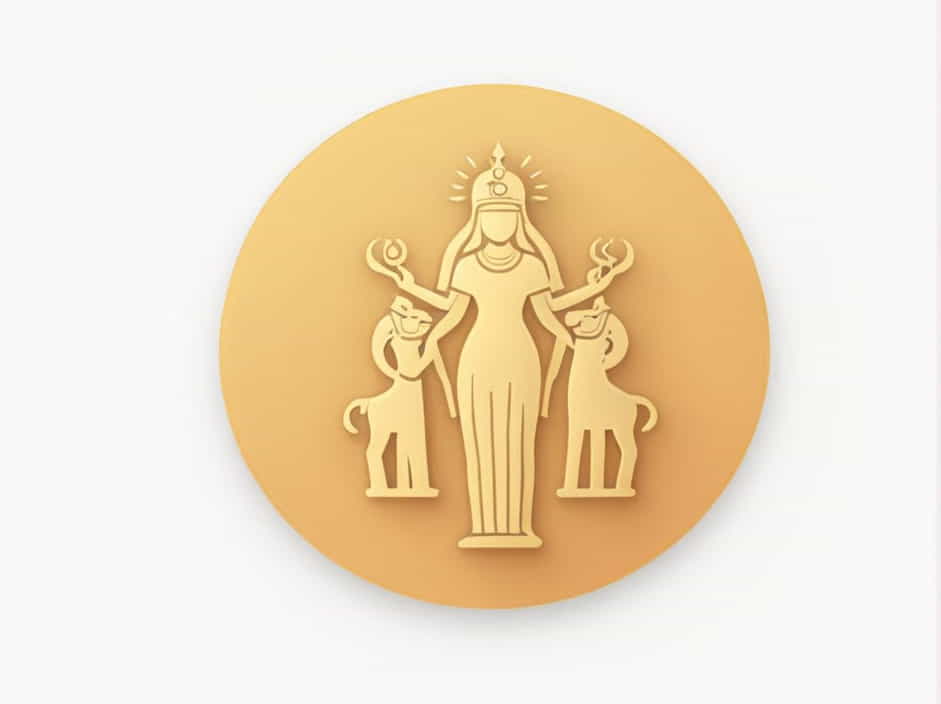Throughout history, different civilizations have revered powerful deities that embody creation, protection, destruction, and renewal. Among them, Vishnu, the Hindu preserver of the universe, and Inanna, the Sumerian goddess of love, war, and fertility, stand out as two of the most influential divine figures in ancient mythology.
Despite originating from vastly different cultures-Hinduism in India and Sumerian religion in Mesopotamia-these two deities share striking similarities in their themes, attributes, and roles in cosmic order. This topic explores the connections, differences, and significance of Vishnu and Inanna in their respective traditions.
Vishnu: The Preserver of the Universe
1. Who Is Vishnu?
In Hindu mythology, Vishnu is one of the principal deities of the Trimurti, alongside Brahma (the creator) and Shiva (the destroyer). His primary role is to preserve and maintain balance in the universe, ensuring that dharma (cosmic order) is upheld.
2. Attributes and Symbolism
Vishnu is often depicted with:
- Four arms, symbolizing his omnipotence and omnipresence.
- A conch shell (Shankha), representing the sound of creation.
- A discus (Chakra), symbolizing the destruction of evil.
- A lotus (Padma), signifying purity and enlightenment.
- A mace (Gada), denoting strength and protection.
3. Avatars of Vishnu
One of Vishnu’s unique aspects is his ten avatars (Dashavatara), which he assumes whenever the world is in danger. These include:
- Rama, the noble warrior-king.
- Krishna, the divine strategist and guide.
- Buddha, the enlightened teacher.
- Kalki, the future warrior who will restore order.
These incarnations reflect his adaptability and intervention in human affairs, ensuring that righteousness prevails.
Inanna: The Sumerian Goddess of Love and War
1. Who Is Inanna?
Inanna, also known as Ishtar in Akkadian mythology, was one of the most revered deities in ancient Mesopotamia. She embodied love, fertility, war, and political power, making her one of the most complex goddesses in Sumerian belief.
2. Attributes and Symbolism
Inanna is often represented with:
- A crown and a staff, symbolizing her divine authority.
- A lion, representing her strength and ferocity.
- The eight-pointed star, a symbol of Venus, the planet associated with her.
- Wings, indicating her celestial nature and power over both heaven and earth.
3. The Myth of Inanna’s Descent to the Underworld
One of the most famous myths of Inanna is her descent into the underworld, where she seeks to expand her power. This story highlights:
- Her ambition and determination, as she willingly enters the realm of death.
- Her vulnerability, as she is stripped of her divine attributes.
- Her resurrection, symbolizing renewal and rebirth.
This myth parallels themes found in many religious traditions, including death and resurrection cycles in other cultures.
Similarities Between Vishnu and Inanna
Despite coming from different civilizations, Vishnu and Inanna share several thematic and symbolic connections:
1. Cosmic Order and Balance
- Vishnu maintains dharma, ensuring that the universe functions properly.
- Inanna, though often seen as chaotic, represents the balance between love and war, creation and destruction.
Both deities symbolize the interplay between opposing forces, ensuring cosmic stability.
2. Transformation and Avatars
- Vishnu takes on multiple avatars to intervene in human affairs.
- Inanna undergoes transformation during her descent and resurrection.
This suggests that both figures adapt to challenges, evolving as necessary to maintain their roles.
3. Connection to Water and the Sky
- Vishnu is often depicted floating on the cosmic ocean, linked to creation and divine power.
- Inanna is associated with Venus, the morning and evening star, symbolizing her celestial nature.
Both have strong connections to natural and cosmic elements, reinforcing their divine status.
Differences Between Vishnu and Inanna
1. Role in Mythology
- Vishnu is a protector, intervening when necessary to preserve balance.
- Inanna is both a creator and destroyer, embodying contradictory forces of love and war.
This difference highlights the contrasting cultural values of Hinduism and Sumerian religion-Hinduism emphasizes order and preservation, while Sumerian mythology often reflects chaos and cycles of power.
2. Interaction with Humanity
- Vishnu’s avatars frequently live among humans, guiding them toward righteousness.
- Inanna, though influential, often acts independently, asserting her dominance over gods and mortals alike.
This suggests that Vishnu is a more benevolent and guiding force, while Inanna represents the unpredictable nature of power.
The Legacy of Vishnu and Inanna
Both Vishnu and Inanna continue to influence religious thought, literature, and art even today:
- Hindu temples worldwide honor Vishnu, with millions worshiping his avatars like Krishna and Rama.
- Inanna’s myths inspire modern literature and feminist interpretations, symbolizing empowerment and resilience.
These deities remain relevant symbols of cosmic balance, transformation, and divine power, reflecting humanity’s search for meaning and order in the universe.
The Universality of Mythological Themes
The stories of Vishnu and Inanna illustrate the universal nature of mythology, where cultures across time and geography create divine figures that reflect their values and beliefs.
While Vishnu embodies preservation, righteousness, and divine intervention, Inanna represents love, power, and transformation. Their myths, though distinct, share common themes of balance, cosmic duty, and renewal, reminding us that humanity’s quest for understanding the divine is timeless.
By studying these deities, we gain insight not only into ancient civilizations but also into our own beliefs and values, proving that mythology continues to shape our world today.
